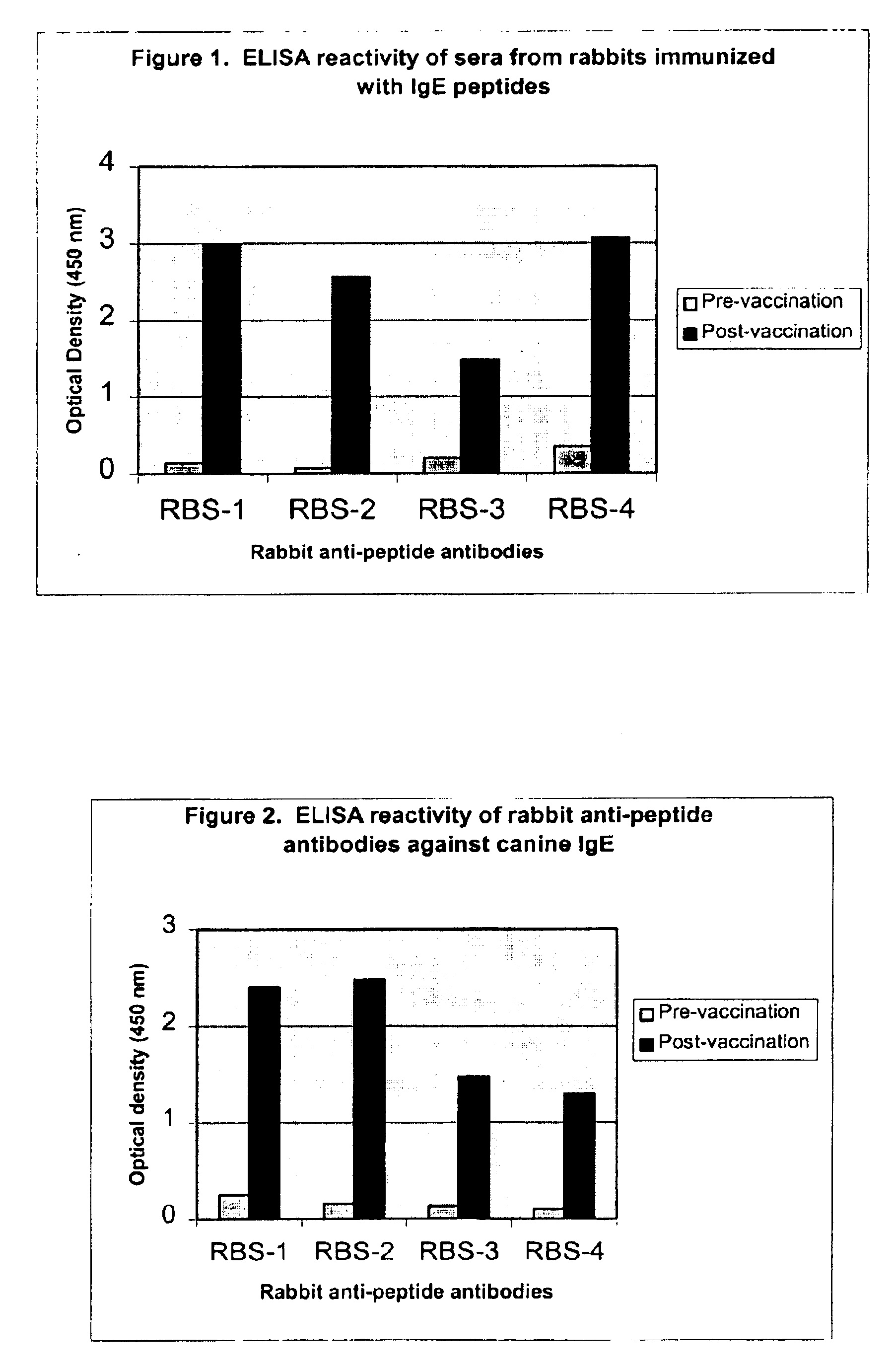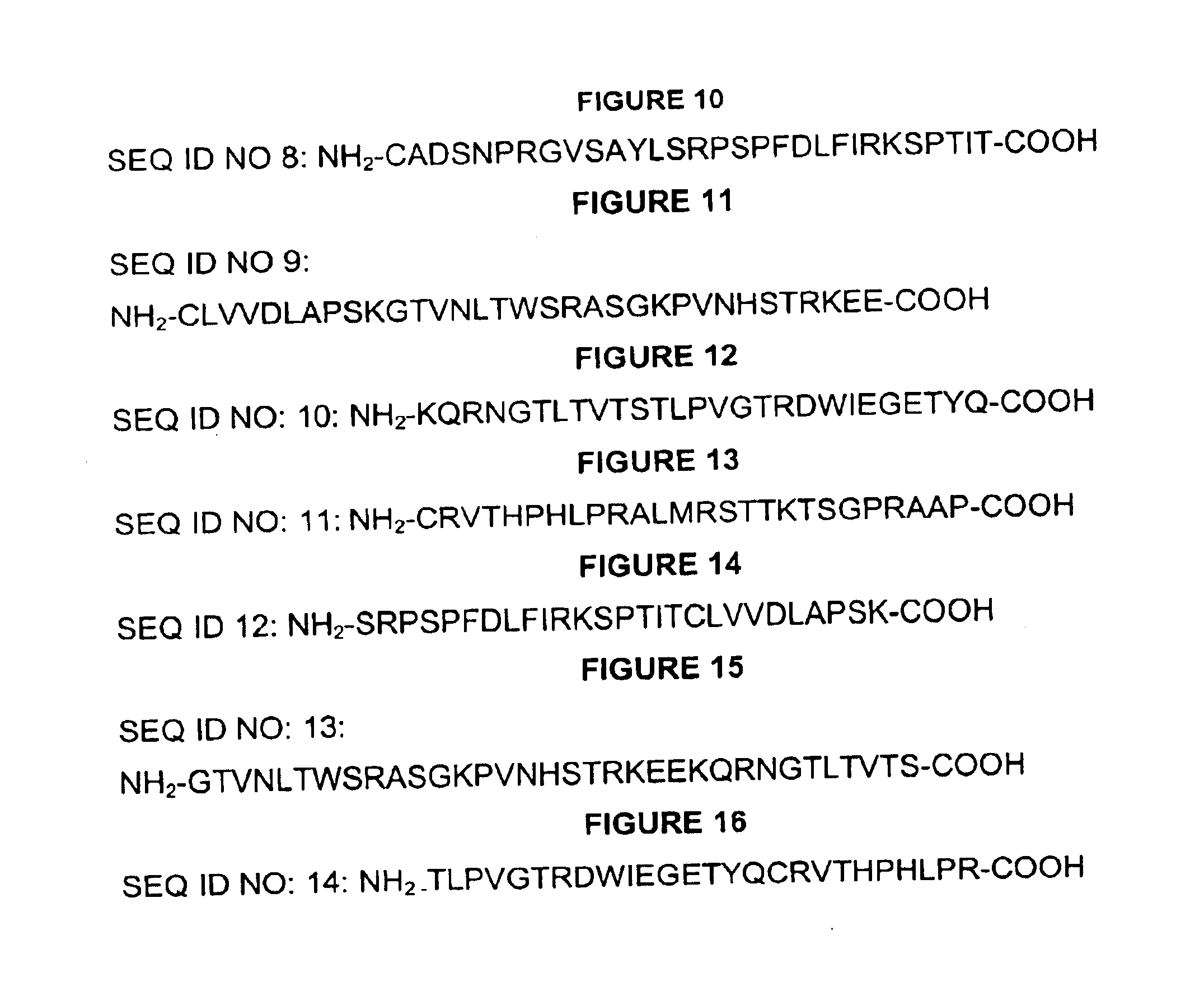Anti-IgE vaccines
a vaccine and anti-ige technology, applied in the field of anti-ige vaccines, can solve the problems of conflicting approaches, inconsistent and conflicting, and little information on the bona fide ige receptor-binding site, and achieve the effect of increasing the level of ige and inducing hypersensitivity
- Summary
- Abstract
- Description
- Claims
- Application Information
AI Technical Summary
Benefits of technology
Problems solved by technology
Method used
Image
Examples
examples
1. Selection of Peptides and Conjugation to KLh
[0137]The CH3 domain of canine IgE as well as the junction between CH3 and CH4 domains formed the basis for selection of peptide vaccine candidates. Various nested and overlapping peptides were selected using computer programs for determination of appropriate antigenic properties including hydrophilicity, surface probability, flexibility, antigenic index, amphiphilic helix, amphiphilic sheet, and secondary structures. The peptides were synthesized and conjugated to KLh at Zymed Laboratories Inc. (San Francisco, Calif.) using cysteine-directed coupling method. The KLh-conjugated peptides were used to immunize rabbits at Zymed Laboratories Inc (South San Francisco). Peptides were also synthesized at W. M. Keck Biotechnology Resource Center (New haven, Conn.) with an N-terminal biotin residue without conjugation to KLh to provide material for use in ELISA to detect anti-peptide antibodies induced in animals immunized with the KLh-peptide c...
PUM
| Property | Measurement | Unit |
|---|---|---|
| body weight | aaaaa | aaaaa |
| volume | aaaaa | aaaaa |
| volume | aaaaa | aaaaa |
Abstract
Description
Claims
Application Information
 Login to View More
Login to View More - R&D
- Intellectual Property
- Life Sciences
- Materials
- Tech Scout
- Unparalleled Data Quality
- Higher Quality Content
- 60% Fewer Hallucinations
Browse by: Latest US Patents, China's latest patents, Technical Efficacy Thesaurus, Application Domain, Technology Topic, Popular Technical Reports.
© 2025 PatSnap. All rights reserved.Legal|Privacy policy|Modern Slavery Act Transparency Statement|Sitemap|About US| Contact US: help@patsnap.com



